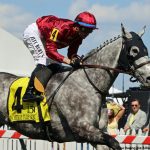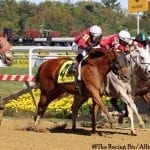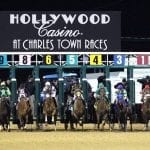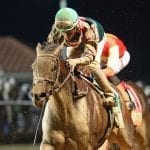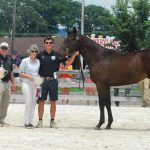MD MILLION: SMALL BREEDER “TAKING A SHOT,” OR TWO
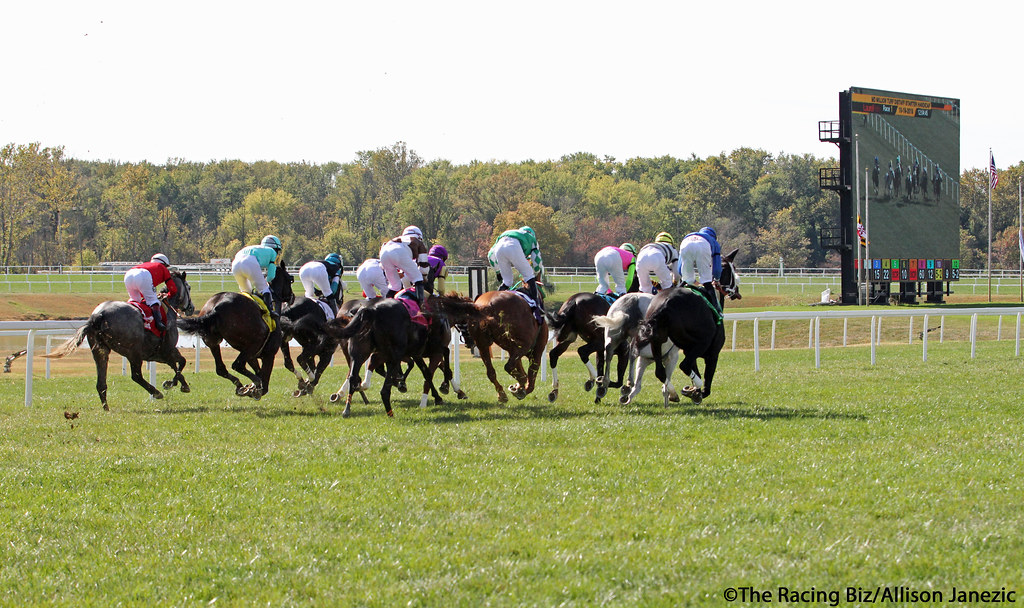
Owner-breeder Harry Kassap has sent out just three horses in 2020, those three making a combined 18 starts. But two of the three – Seville Barber and Quiet Imagination – are set to make their next start October 24 in separate Maryland Million races.
As Meatloaf suggested, two out of three ain’t bad – especially for a small operation that focuses on breeding Maryland-breds by Maryland stallions.
“I think it’s important, if it’s reasonable, to support the [Maryland Million] program,” the Pikesville resident says. “We’re taking a shot.”
Of course, in racing, as in life, fortune favors the bold – a racing lesson driven home to Kassap in 2009.
“My only ever stakes win, my horse went off at over 50-1,” he recalls. “You just never know.”
Indeed. Brickell was 50.20 at post time in that year’s Henry S. Clark Stakes at Pimlico but powered home to win by over a length.
Both his Maryland Million horses this year will be longshots. On the other hand, neither figures to be 50-1.
In the seven-furlong, $100,000 Distaff, Kassap, whose horses are trained at Fair Hill by Tim Woolley, has Quiet Imagination. She’s a sophomore filly by Imagining who’s won twice this year in eight starts while finishing in the money four other times.
- Witty set for first Saratoga trip in Harvey Pack
 Pennsylvania-bed Witty, winner of the Jim McKay Turf Sprint at Pimlico in May, will make his first Saratoga foray in Friday’s Harvey Pack.
Pennsylvania-bed Witty, winner of the Jim McKay Turf Sprint at Pimlico in May, will make his first Saratoga foray in Friday’s Harvey Pack.
“We were aiming definitely for this day with Quiet Imagination,” Kassap says. “She’s just gritty.”
She’s 12-1 on the morning line, and she’ll have to contend with some awfully fast fillies. Among those are the multiple stakes winners Hello Beautiful, the morning line favorite, and Limited View, as well as the comebacking Las Setas and hard-hitting Artful Splatter.
But Quiet Imagination has attracted the services of leading rider Trevor McCarthy. And the projected shape of the race may play to her advantage. A number of the major players in here like to be on or near the lead, while Quiet Imagination figures to do her best running in the latter portions of the race.
She’s mostly done her work at six furlongs, but Kassap expects seven should be easily within her scope.
“She always gallops out pretty strong,” he notes. “She loves to run.”
In the very next race, the Maryland Million Turf, Kassap’s Seville Barber is 15-1. Yet while his odds are longer, his chances may actually be better. Unlike the Distaff, in which there are several proven stakes runners, the Turf is a pretty wide-open affair with no real standout.
Seville Barber, a four-year-old son of Seville, is winless in five tries this year and remains eligibile for a first allowance. Then again, so, too does last year’s Turf winner, Mr. d’Angelo, who’s 9-2 on the morning line.
Last time out, Seville Barber finished way up the track in an off-the-turf allowance at Delaware.
- De Francis Dash “a lasting tribute”
 Joe De Francis sought to create a race that would be a “lasting tribute” to his father. But he’s not sure he likes it being called historic.
Joe De Francis sought to create a race that would be a “lasting tribute” to his father. But he’s not sure he likes it being called historic.
“This horse can’t stand up on the dirt,” Kassap says with a laugh. Consider it a lesson learned.
Seville Barber ran perhaps his best race of the year in his very first, when he rallied into third, just a length behind Outofthepark, who came right back to win a two-other-than. Since then, however, Seville Barber has been fourth, sixth, and fourth on the turf, prior to that last-out dirt try.
“He ran a beautiful first race of the year,” Kassap recalls. “Since then he’s had traffic trouble, he’s been too late to make his move, he’s been stuck outside.”
While Kassap and Woolley had been pointing Quiet Imagination to her Maryland Million spot, Kassap characterizes the call on Seville Barber as a “last-minute decision.”
One factor in their thinking was that Seville Barber “came out of [his last start] really good,” Kassap says. Another is that “I don’t know how much grass racing is going to be around [in the rest of 2020].”
And then there’s this: the added ground of the Turf, which has been stretched out to 1 1/8 miles, could play to his advantage. Sire Seville’s best win, in the Australian Group 1 Metroplitan, came over 2400 meters – approximately 1 ½ miles.
Add it all up, Kassap says, and they decided: “Let’s go for it.”
Kassap began his career in racing claiming horses, and he made as many as 120 starts in a single year, that in 2011. By 2015-2016 he was nearly out of the game altogether, making two starts one year and four the next. Now, with a tiny group of homebreds, he’s trying to join the club of owners and breeders with small operations who’ve found gold on the biggest day for the home team in Maryland racing.
“The breeders, they hung in there for years when all good sense says they shouldn’t have,” Kassap says. “That’s why I like to support the program.”
LATEST NEWS


